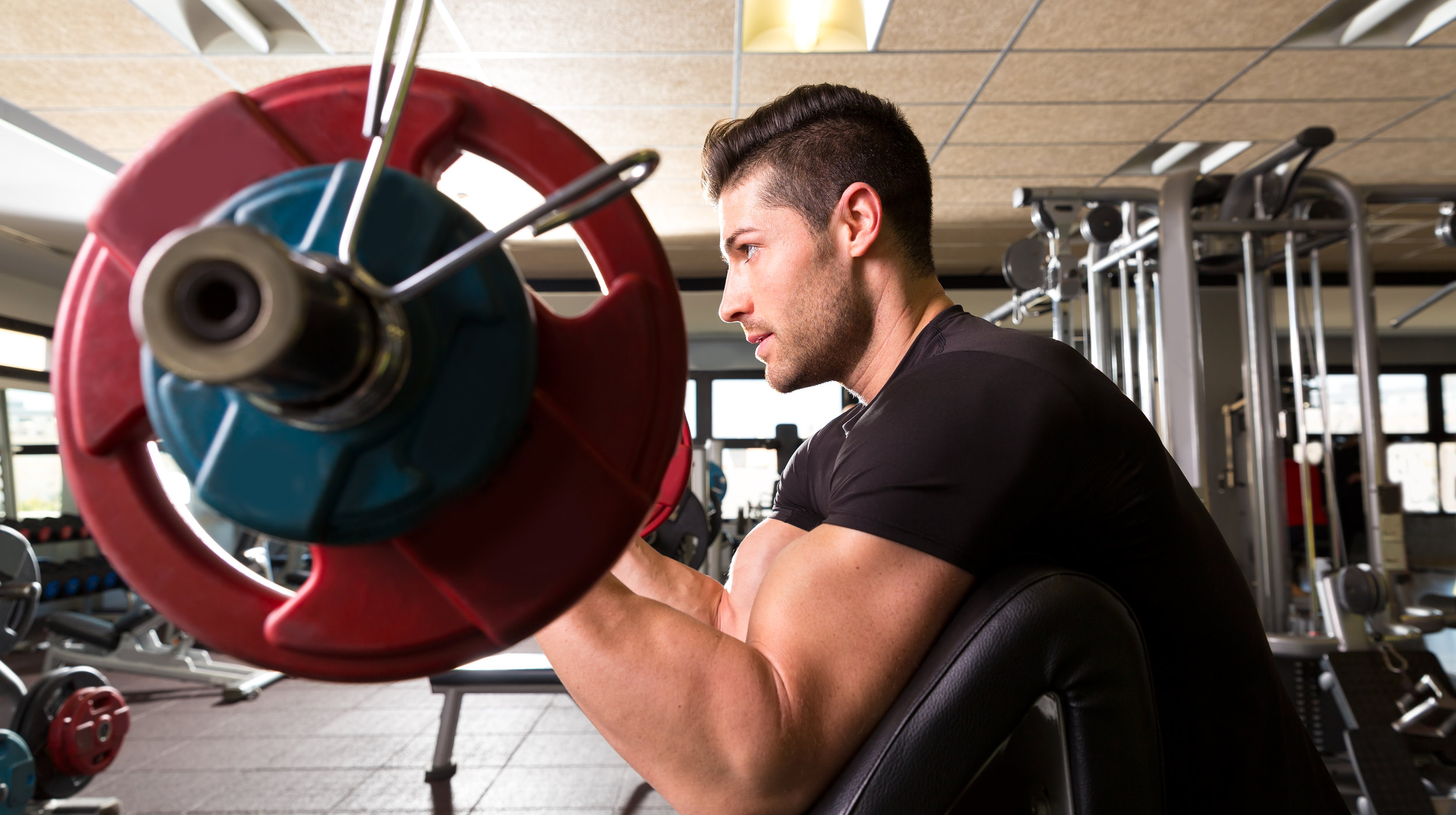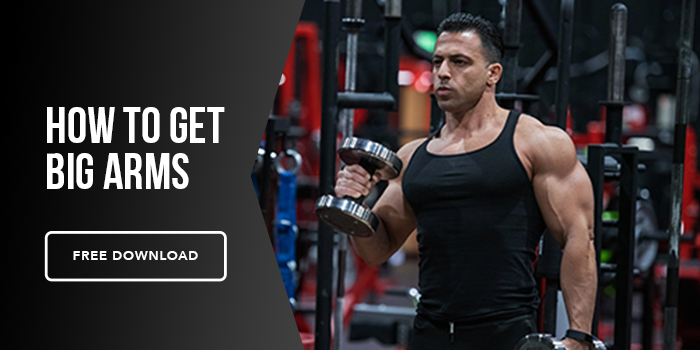The ever elusive gun show. Sometimes I can’t decide if most guys would rather have a big chest or big arms. It’s what peeks outside of your sleeve to intrigue the ladies (or so we tell ourselves). Some feel it’s that one muscle when you're clothed that people notice right away if it’s what makes you big or not. Either way, everyone forever chases what are ironically, the smallest muscle groups of the muscles typically worked in the gym.
Here are my guidelines for building your arms. I will be creating a whole series of articles of these for each muscle group so be on the lookout for the other articles.
Frequency: Should be trying to stimulate the biceps and triceps 2-3 times a week, with 10-12 total weekly sets, to keep maximizing the muscle building signal that a weightlifting exercise creates on that particular muscle (signal drops after 24-48 hours so you need to recreate that signal every time which explains the increase in frequency vs traditional body part split). Every 4-6 weeks, you could change up the exercise if you find you are no longer making progress, not feeling it work the muscle, or need to mix it up.
Intensity (Sets/Reps):
8-10 total sets (per muscle) for the week split up evenly among your 2-3 workouts that include arms. They are used in most of the bigger lifts so they don’t need as much added work.
Every 3-4 weeks you should be changing the rep scheme or going up in weight, to create a newer stimulus that’ll help further progression as you get more comfortable with a lift and weights start increasing less and less per week.
Weeks 1-4 - 6-8 reps (more of an intensity phase focused on strength)
Note: You can go higher rep for the more isolated movements as they probably don’t need to be in such a low rep range and could cause a bigger injury risk.
Weeks 5-8 - 10-12 reps
Weeks 9-12 - 12-15 reps (more of an accumulative phase focused on volume)
For more advanced lifters (3-4+ years proper lifting): If you find the biceps or triceps are a lagging body part, you can also increase the total weekly sets by 1-2 sets each week, AS LONG AS you are properly recovering. This will help ensure continued progression during a high volume phase, as your body adapts to its minimum effective dose for a particular muscle group, and works towards that maximum recoverable volume. Again, should only be done to 1-2 muscles groups in a cycle NOT all.
No momentum!
The arms thankfully, don’t need AS much attention paid to form as say a squat or deadlift, but, like any other muscle, you do want to make sure you are firing the intended muscle. For instance, when doing heavy barbell curls, you are just spinning your wheels if you focus solely on weight, and find yourself using momentum in your shoulders to swing the barbell up. Simple rule of thumb - if you don’t feel the muscle working, it isn’t being maximally stimulated. For such a small muscle group, I find this rule even more important because it’s so easy to forget.
Focus on being able to hit a peak contraction on each exercise. Play around with SLIGHT changes to the angle to see if you feel a better contraction more in different areas. Being a smaller muscle group you can take these exercises and reps to failure. It is not as taxing on the nervous system, so as long as you find you are recovering and making progress week to week you should be at least only leaving 1-2 reps left in the tank.
Exercise Selection
Being a smaller muscle group, the biceps and triceps are unique from the other muscles, in that they don’t really have compound lifts. When you do a pushdown, or preacher curl, you aren’t really targeting anything else significantly other than the tricep or bicep. I’ve always seen all arm exercises as isolation work. If you are in the powerlifting realm, it isn’t even really in your program other than as assistance work to help with your main lifts.
The better way to look at them is how a powerlifter does. The biceps are seen more as a secondary mover on all pulling exercises (deadlift, pull-ups, rows etc.). The triceps are secondary movers on all pushing exercises (bench, overhead press etc). When seen this way, a powerlifter will only add in arm work if they feel it is hurting their progress on the bigger movements. If it is, add in a couple sets to help bring up that muscle that is falling behind.
Also keep in mind, because it’s already a secondary mover in a lot of big compound lifts, you do NOT need nearly as many exercises as you would for the chest, legs, and back. You are still getting a stimulus on them when they assist bigger movements. I say this because arms are probably the most “overworked” muscle. By that, I mean novice lifters will put loads and loads of volume hitting the arms on TOP of all the bigger compound work. They don’t pay attention to the fact that their numbers on isolation movements aren’t going up, and assume the next move is to add even more. Do LESS! Maybe 8-10 total weekly sets per muscle to start. Unless you are severely lagging in either muscle you probably won’t need much more.
Biceps Exercises: barbell curl, dumbbell curl, preacher curl, concentration curl, cable curl, hammer curl, EZ bar curl, reverse grip curl, etc.
Triceps Exercises: Rope pushdown, close grip bench, straight bar pushdown, overhead extension, skullcrushers, dips, kickbacks, etc.






